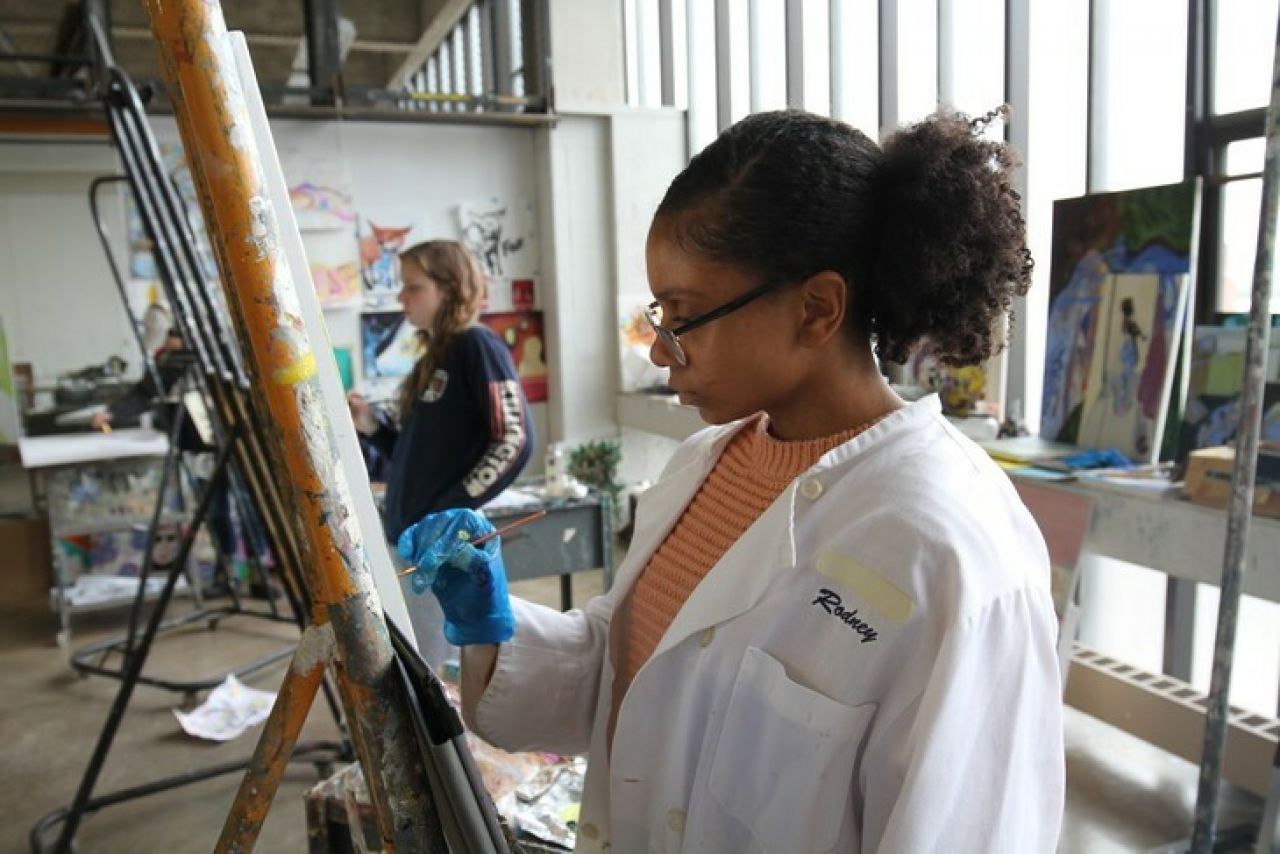October 01, 2019
Rivers finds her stride as a student-athlete and medical illustrator

Being a student-athlete is a major commitment, and with that comes the responsibility of balancing athletics and academics. Within Penn State's College of Arts and Architecture, Danae Rivers, junior integrative arts major and 2019 indoor track and field 800-meter national champion, has found an academic lane that positions her to succeed on and off the track.
Originally enrolled in the pre-veterinary major, Rivers' interest in medical sciences and art intersected when she discovered medical illustration. Within the field, professional artists transform complex information into visual images for use by medical professionals and patients.
"I quickly learned that pre-vet was not for me," Rivers said. "I began to look into what it took to be a medical illustrator and that's how I found the College of Arts and Architecture."
The College of Arts and Architecture offers an integrative arts major, which is a student-designed degree program. The Integrative Arts program is specifically designed to encourage and to provide students with the broadest opportunities to explore unique and unexpected creative, intellectual and vocational pathways.
"It is really neat that I was able to create my own major at Penn State," Rivers said. "Arts and Architecture has helped me get involved in different aspects of art and explain how it all ties into the medical procedures and processes."
With a settled academic path, Rivers' track and field accolades are piling up. In early March, her indoor season culminated with a first-place finish in the women's 800-meter dash at the indoor NCAA national championship meet. The victory is the first women's individual national championship in Penn State history.
Shortly after her victory, however, it was back to the classroom, where Rivers is taking Intermediate Painting with John Bowman, professor of art in the Penn State School of Visual Arts. The course is not biology focused but has a relatively extensive study of muscular and skeletal structure.
In addition to her study of muscle structure in Bowman's course, she is working on painting a microscopic view of the brain made to look like a flower.
"She took something with a fairly big yuck factor and made it very beautiful and intriguing," Bowman said. "When you look at it you see a pretty and colorful flower, but when you look closer you realize it is the human brain and it is a perfect illustration of her skills in the medical illustrator field."
Bowman said Rivers' dedication and discipline have helped her succeed in the classroom and he noted that, despite missing class for practices and meets, she is always on top of her work and does a good job balancing her athletics and academics.
Athletes are often away on the weekends and occasionally miss class. Rivers said the travel schedule can make it difficult to stay motivated and focused on school, but because of the support she has from her professors, and her dedication to maintaining balance, she's achieving lofty goals both on and off the track.
"Track consumes my life but having the support from my professors helps me to balance my work," Rivers said. "The College of Arts and Architecture and my professors are helping me to achieve my goal of portraying medicine through art and they help me accomplish everything along the way."
